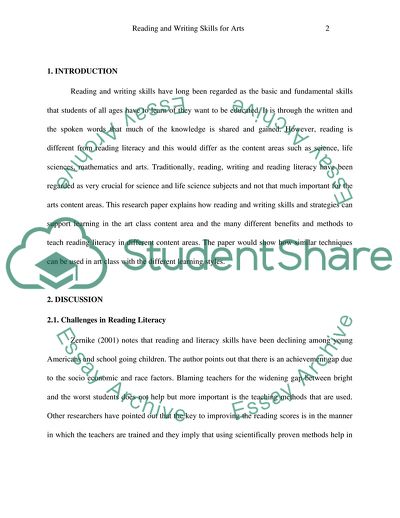Cite this document
(How Reading and Writing Skills and Strategies Can Support Learning in Coursework Example | Topics and Well Written Essays - 1250 words, n.d.)
How Reading and Writing Skills and Strategies Can Support Learning in Coursework Example | Topics and Well Written Essays - 1250 words. https://studentshare.org/education/1726248-how-reading-and-writing-skills-and-strategies-can-support-learning-in-art-classes
How Reading and Writing Skills and Strategies Can Support Learning in Coursework Example | Topics and Well Written Essays - 1250 words. https://studentshare.org/education/1726248-how-reading-and-writing-skills-and-strategies-can-support-learning-in-art-classes
(How Reading and Writing Skills and Strategies Can Support Learning in Coursework Example | Topics and Well Written Essays - 1250 Words)
How Reading and Writing Skills and Strategies Can Support Learning in Coursework Example | Topics and Well Written Essays - 1250 Words. https://studentshare.org/education/1726248-how-reading-and-writing-skills-and-strategies-can-support-learning-in-art-classes.
How Reading and Writing Skills and Strategies Can Support Learning in Coursework Example | Topics and Well Written Essays - 1250 Words. https://studentshare.org/education/1726248-how-reading-and-writing-skills-and-strategies-can-support-learning-in-art-classes.
“How Reading and Writing Skills and Strategies Can Support Learning in Coursework Example | Topics and Well Written Essays - 1250 Words”. https://studentshare.org/education/1726248-how-reading-and-writing-skills-and-strategies-can-support-learning-in-art-classes.


